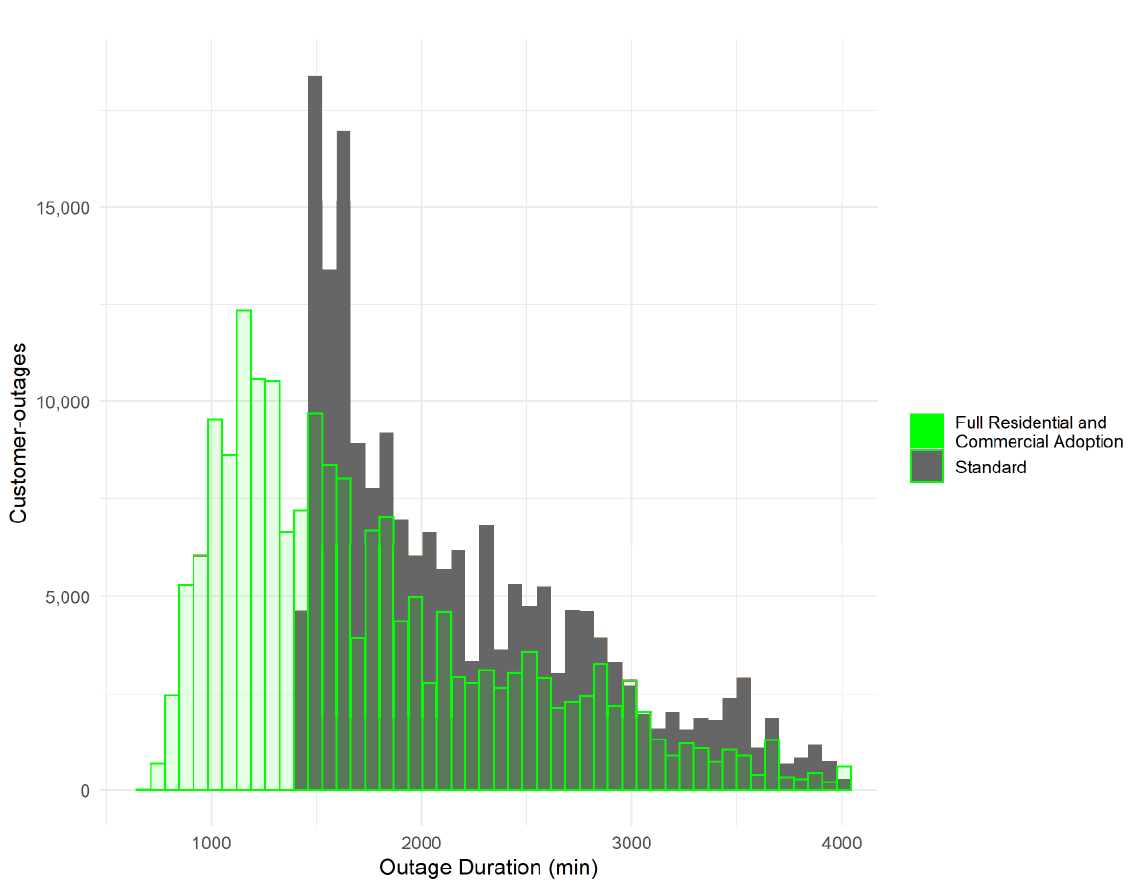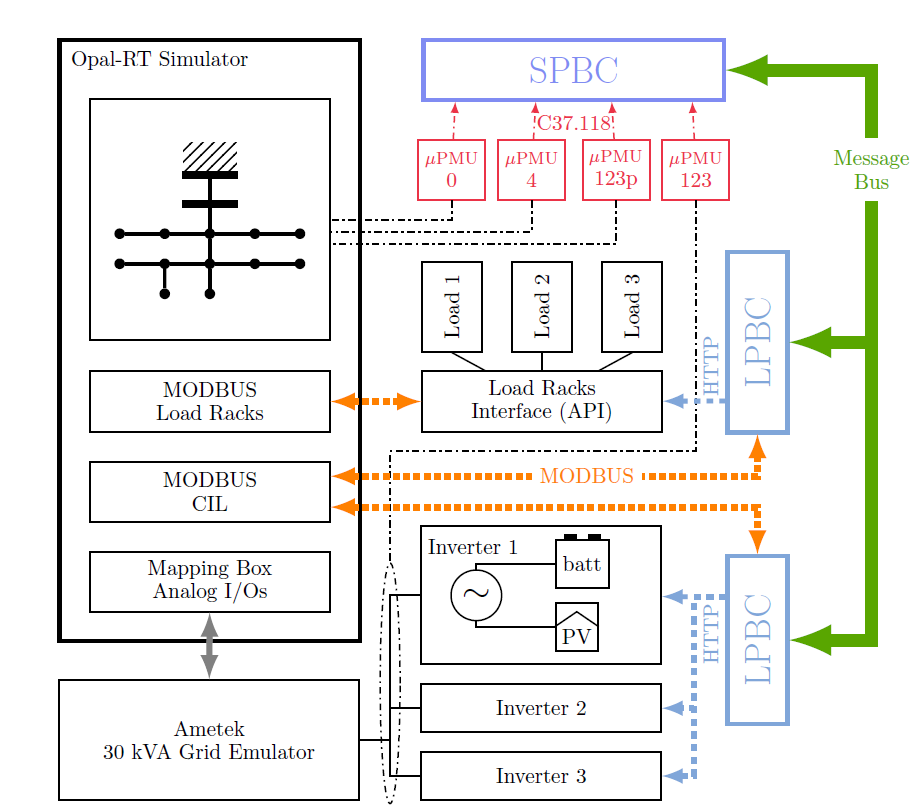Power Systems Simulation
Power Systems Simulation
The Power Systems Simulation team focuses on the development of standardized simulation model exchange in order to couple third-party simulators through a common interface.
The Role of Simulations
Simulations are one of the most important tools for researchers, engineers, and other stakeholders to assess, design or evaluate new technologies. Those technologies can be new resources, e.g., different types of energy storage or electricity generators, or novel control systems, e.g., to increase efficiency or add additional functionality.
 Simulations also allow the exploration of different scenarios, e.g., high penetration of energy resources with and without co-located storage, to evaluate the interdependency of coupled systems in the context of local and global coupling of electricity grids. However, most industry standard simulation tools are domain-specific and are specialized for certain applications. For example a distribution modeling tool, as typically used by U.S. utility companies, provides good capability for distribution system planning and evaluation; but may lack the capability of emerging technologies, e.g., predictive control algorithms.
Simulations also allow the exploration of different scenarios, e.g., high penetration of energy resources with and without co-located storage, to evaluate the interdependency of coupled systems in the context of local and global coupling of electricity grids. However, most industry standard simulation tools are domain-specific and are specialized for certain applications. For example a distribution modeling tool, as typically used by U.S. utility companies, provides good capability for distribution system planning and evaluation; but may lack the capability of emerging technologies, e.g., predictive control algorithms.
What We Do
Berkeley Lab’s Grid Integration Group (GIG) is adopting the Functional Mock-up Interface (FMI) (fmi-standard.org/) as a free standard that defines an interface to exchange dynamic models using a combination of C code and XML files. It originated in the European automotive industry and is currently supported by 100+ tools. Berkeley Lab has developed a toolchain to export, co-simulate, and analyze third-party simulators (see tools and functionality below).
Projects


